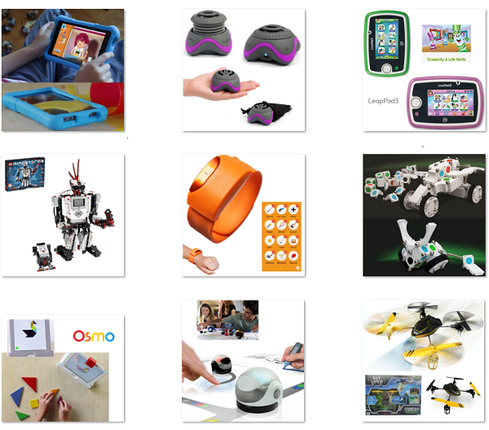Salesforce.com Lightning Connect Taps Real-Time Data
Salesforce.com adds data-integration option for accessing up-to-the-minute data from sources such as SAP apps and Oracle databases.


10 Smart Tech Toys For Kids
10 Smart Tech Toys For Kids (Click image for larger view and slideshow.)
Salesforce.com on Thursday introduced Salesforce1 Lighting Connect, a new data-integration option billed as the "fastest, easiest" way to view data from any source system from within Salesforce cloud-based applications.
Salesforce says Lighting Connect is different from existing integration options in that it supports point-and-click setup, real-time (rather than batch) integration, and access to data from on-premises applications and databases as if it originated in Salesforce.
A recent Salesforce survey of customer CIOs found that nearly half (48%) of respondents identified integration with on-premises systems as one of their biggest challenges. Lighting Connect was designed to "wrap a layer of agility around backoffice data," said Scott Holden, Salesforce.com's VP of platform marketing, in a phone interview with InformationWeek.
[Want more on mobile dev? Read Salesforce.com Speeds App Development With Lightning.]
Salesforce points to obvious Lighting Connect advantages over primitive options like manual file uploads and file transfers. But companies with frequent data-integration needs are already likely to be using integration tools from AppExchange partners such as Informatica, MuleSoft, and SnapLogic. Even so, these and other partners are supporting Lighting Connect because it offers a new data-integration option.
The most popular data-integration approach is ETL-style loading. This typically involves overnight or even hourly batch data uploads -- either from on-premises systems (or cloud apps) into Salesforce or from Salesforce into data marts or warehouses. Many integration firms also support more sophisticated event- and message-based integration. In this more complicated, Enterprise Application Integration (EAI) approach, data is continuously copied from third-party systems into Salesforce.
Lighting Connect is simpler than EAI, offering point-and-click setup of External Objects, a new source type that Salesforce has added alongside its existing Standard Objects and Custom Objects. Users can call on these external objects for point-in-time snapshots of up-to-the-minute information. It's an approach that's geared to human querying, searching, data visualization, and simple workflows, as when users want or need to do quick lookups from smartphones or tablets.
Holden described a retail-promotion scenario in which salespeople want to see real-time sell-through data: "That order data might live in SAP, but you want to give salespeople who are out on the road visibility into how quickly different products are moving. With a check of box, you can choose which table from within SAP you want to view from within Salesforce, whether that's orders or inventory or shipment information."
The vendor will also use Lightning Connect to bring data from apps built on its cloud-based Heroku platform into Salesforce. Last year Salesforce introduced Heroku Connect for syncing data from Heroku apps with Salesforce, but Lighting Connect will add an OData-based real-time option to the Heroku Connect portfolio.
Lighting Connect is based on the emerging Open Data Protocol (OData), which is supported by vendors including Microsoft, IBM, and SAP. It's a lightweight way to access external data from within Salesforce, but the information isn't copied and stored. Thus Lighting Connect is not an EAI alternative that can be used for developing a unified view of master data across systems or powering always-on business processes. That's probably why partners including Informatica, Jitterbit, MuleSoft, Progress Software, SnapLogic, and SoftwareAG have jumped on the Lighting Connect bandwagon -- it's no threat to their ETL or EAI businesses.
"We've created an OData connector so our customers won't have to worry about creating end-point connections," said Ajay Gandhi, Informatica Cloud VP of product marketing, in a phone interview with InformationWeek. That connector is now included in the Informatica Cloud platform offered on the AppExchange, and Gandhi said it supports integration with hundreds of popular data sources and applications.
Salesforce1 Lighting Connect is available immediately, priced at $4,000 per-month, per-connection. The system has built-in links to SAP and a few other systems that support OData, according to Holden, but otherwise Salesforce is leaving the sale of application-specific connectors to its integration partners.
Apply now for the 2015 InformationWeek Elite 100, which recognizes the most innovative users of technology to advance a company's business goals. Winners will be recognized at the InformationWeek Conference, April 27-28, 2015, at the Mandalay Bay in Las Vegas. Application period ends Jan. 16, 2015.
About the Author
You May Also Like






